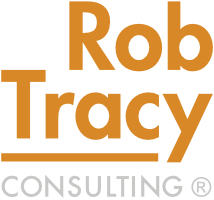EOS®, the Entrepreneurial Operating System®, has become a popular system for entrepreneurial businesses. According to the EOS® Worldwide website, 80,000 companies have installed EOS®. For those considering EOS®, I recommend calling one of their professional implementers to learn more.
However, I am reaching out to the people that are NOT choosing EOS®. Despite its popularity, it isn’t for everyone. Even the Toyota Camry, which is a fine automobile, isn’t for everyone.
Some of the reasons that I’ve heard for not choosing EOS® include:
- It’s over-simplified.
- It uses too much jargon.
- Parts of it don’t seem to fit my business very well.
- It’s too expensive
- It’s too corporate sounding.
- It pushes us too hard and too fast.
These statements don’t make EOS® a bad system, nor does it mean that EOS® advocates are wrong. It only means that for some people EOS® is not right for them. I’m typing this blog on a Macbook Pro. I love it, but I’m sure that there are many knowledgeable people that would criticize it for being a poor value, having limited ports, and being too heavy. No arguments from me, but I still love it, and it’s not for them.
If EOS® isn’t right for you, what should you do?
You could try to replicate the systems from a big-name company like Toyota or Danaher or look at other off-the-shelf solutions like Scaling Up (Gazelles / Rockefeller Habits). They all have their bright spots, but you’ll need to tailor all of these to meet your specific needs, which leads to a key question:
Should you just build your own, custom-tailored operating system?
Implementing a custom operating system is a very viable option. You can create a system that is right for you. Put your fingerprint on it. Sign it and own it.
In order to build your own operating system, you just need to address nine key areas:
- Strategy: How to create, update, and deploy strategy.
- Profitability: How to manage profitability, including product rationalization, costing, pricing, and financial reporting.
- Culture: How to define culture and live by it?
- Organization: How to define roles, responsibilities, and structure for the organization.
- Talent: How to prepare for the talent needs of today and into the future.
- Performance: How to help people perform at a high level.
- Improvement: How to plan and execute a continual improvement program.
- PDCA: How to execute a plan-do-check-adjust cycle to manage issues in real-time.
- Focus: How to keep people focused and aligned on the company’s top priorities.
You won’t need to start from scratch. Many companies and authors have pioneered effective solutions for each of these areas. You can choose the best-of-breed approaches that are the ideal fit for YOUR company. You probably already have some things in place that are working just fine.
You can also choose a budget that works for you. You can decide how much outside expertise and facilitation to use. The more self-sufficient that you can be, the lower the cost. .
Summary
As companies grow, there is a need for increased structure and rigor, and the operating system creates the platform for future growth Whether you choose an off-the-shelf approach or a customized solution, the hard work is the implementation and sustainment. All operating systems will require your leadership.
About the author: Rob is a consultant that focuses on helping leaders of small and mid-size manufacturers to achieve their goals. He specializes in custom-tailored operating systems and strategic consulting. He can be reached at 651-398-9280, or rob@robtracy.net
Rob is not affiliated with EOS® or EOS Worldwide.
